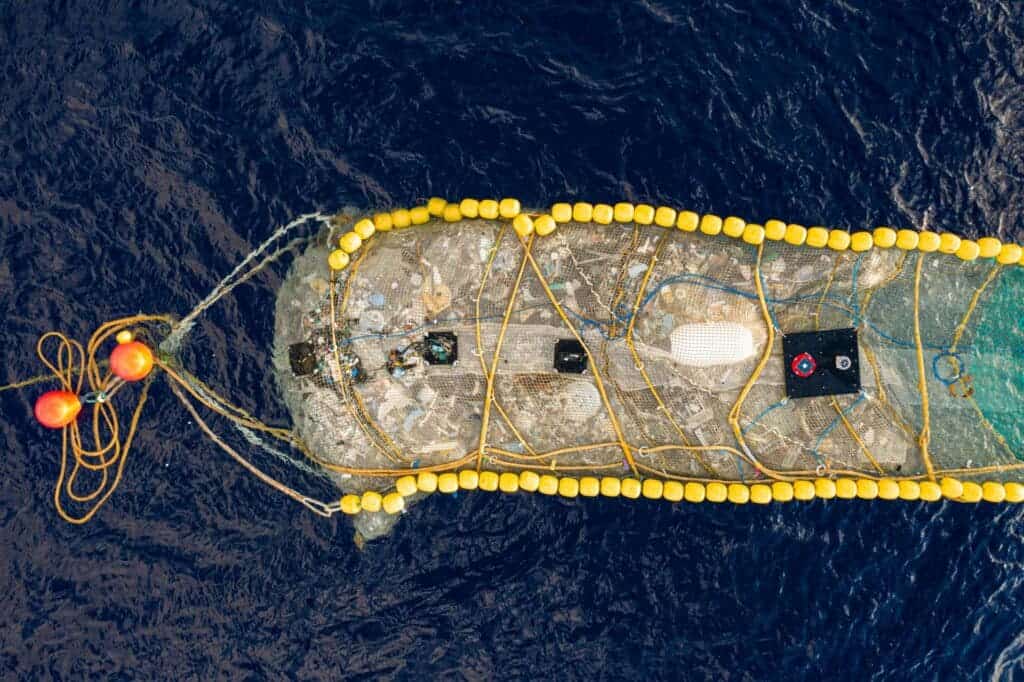Over the years, ungodly amounts of plastic trash have been accumulating in the Pacific Ocean between California and Hawaii – it’s an area so big it has its own name: Great Pacific Garbage Patch. No one knows exactly how much waste is there, but it’s safe to say it’s way too much. NGOs have repeatedly tried to clean it with several devices, without much success – until now.

Jenny from the oceans
Ocean Cleanup, a non-profit that wants to remove 90% of the floating ocean plastic by 2040 recently introduced a new large-scale cleanup system called Jenny, and the results are quite remarkable. Following a set of trials over the course of 12 weeks, the NGO did one final test last week, collecting 9,000 kilograms (20,000 pounds) of debris with the new system.
Even Boyan Slat, the 27-year-old founder of Ocean Cleanup, was excited about the results. Slat wrote on Twitter “holy mother of god”, adding that a “massive load” had been captured. The NGO introduced its first plastic-catching device in 2018 but it broke in the water. Then, in 2019 a new model did a better job, but the organization said thousands of those would be needed to clean up the oceans.
This led scientists to question whether the organization would achieve any results at all in tackling plastic waste. But over the summer Ocean Cleanup raised hopes again with Jenny, an artificial floating coastline that can catch plastic in its fold like a giant arm and then funnel the waste into the net. It’s moved by two vessels across the water, with the current pushing the garbage to a net.
“We can only return to clean oceans if we clean up the ocean garbage patches. Stopping the source will prevent more plastic from entering the oceans. But the only way to reduce the amount of plastic across the ocean is to actually go out there and clean it up,” Slat wrote in a recent blog post. “The reason for this is that plastic pollution is persistent.”
A long-term effort
The device has come a long way since the original prototype. The latest version is U-shaped and more flexible, somewhat like the lane dividers in a swimming pool. Once the system is full of plastic, workers empty it on the marine vessel and take it to shore. Ocean Cleanup then recycles part of the plastic to make sunglasses that they sell to collect funds.

Jenny collects different types of plastic waste, from large containers to very small microplastics. But it only captures plastic that is floating near the ocean surface, so it’s just a partial solution to our plastic problem. A study last year found there’s more than 30 times as much plastic at the bottom of the ocean than there’s near the surface. Plus, the device doesn’t stop more plastic from being thrown away — and it’ll never be able to pick up enough plastic if our current dumping rates continue. The organization estimates that they will need at least 10 of these devices to clean up 50% of the current Great Pacific Garbage Patch in five years. However, we produce about 300 million tonnes of plastic waste every year — and the vast majority of that isn’t recycled.
In addition, this plastic cleaning process comes at an environmental cost, as the whole process also uses some fossil fuel. The original idea was to passively collect plastic using the ocean current, but that led to spilling a lot of the trash that had been collected.
Scientists agree that initiatives such as the one of the Ocean Clean Up will have to be accompanied by limiting or even eliminating the use of disposable plastic. A 2020 study found that more than 11 million metric tons of plastic enters the oceans every year, a figure expected to triple by 2040 without immediate and sustained action from governments and citizens.









